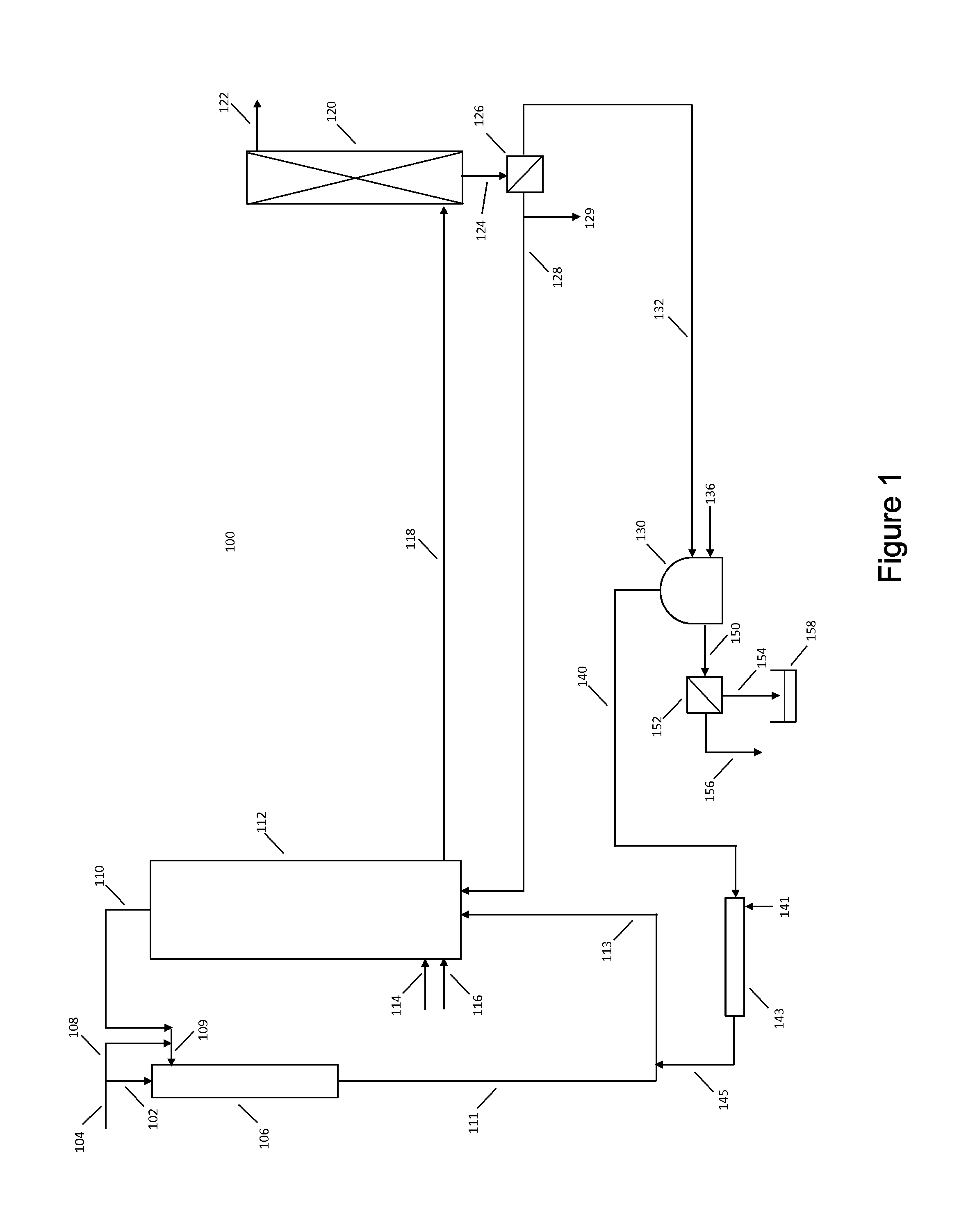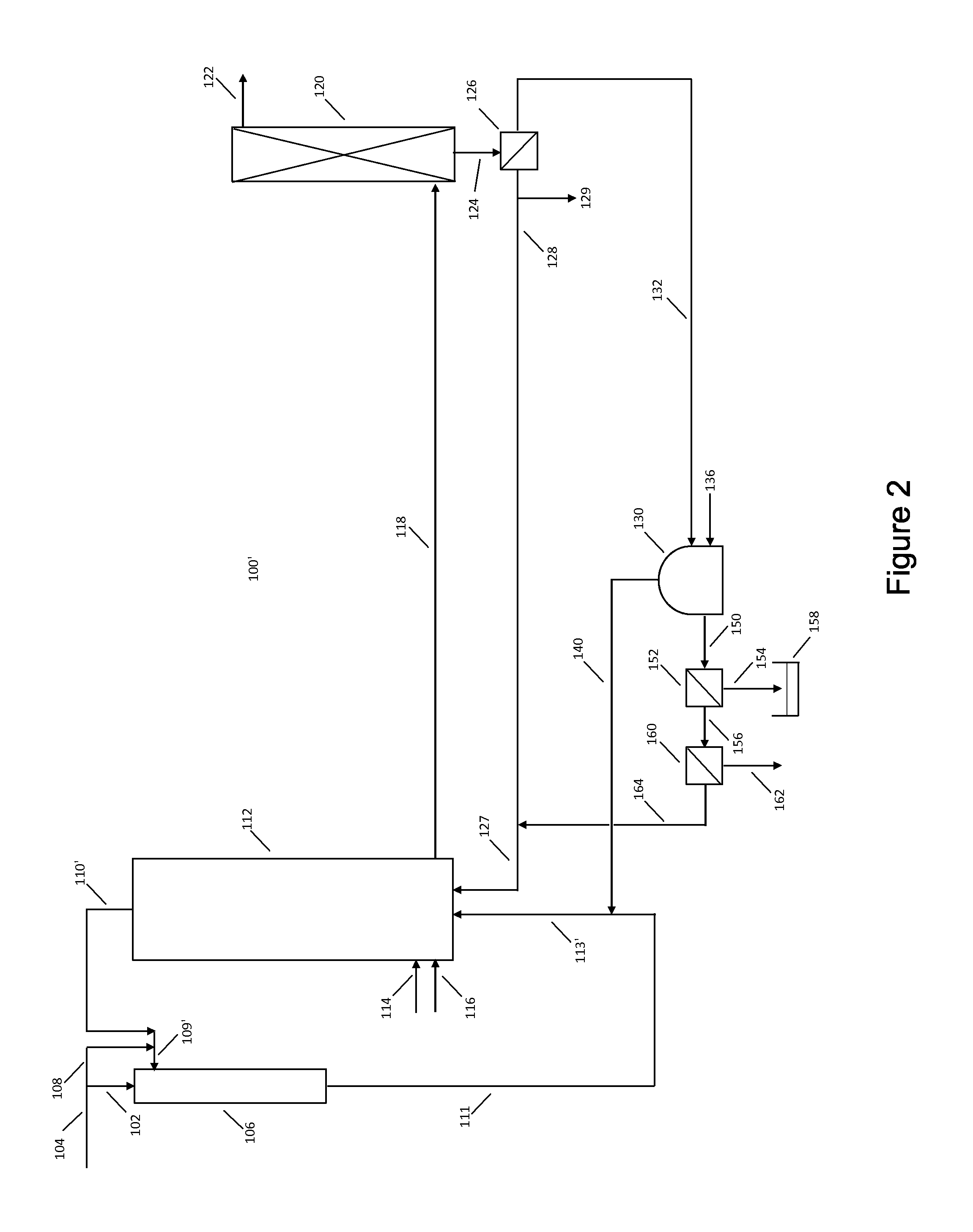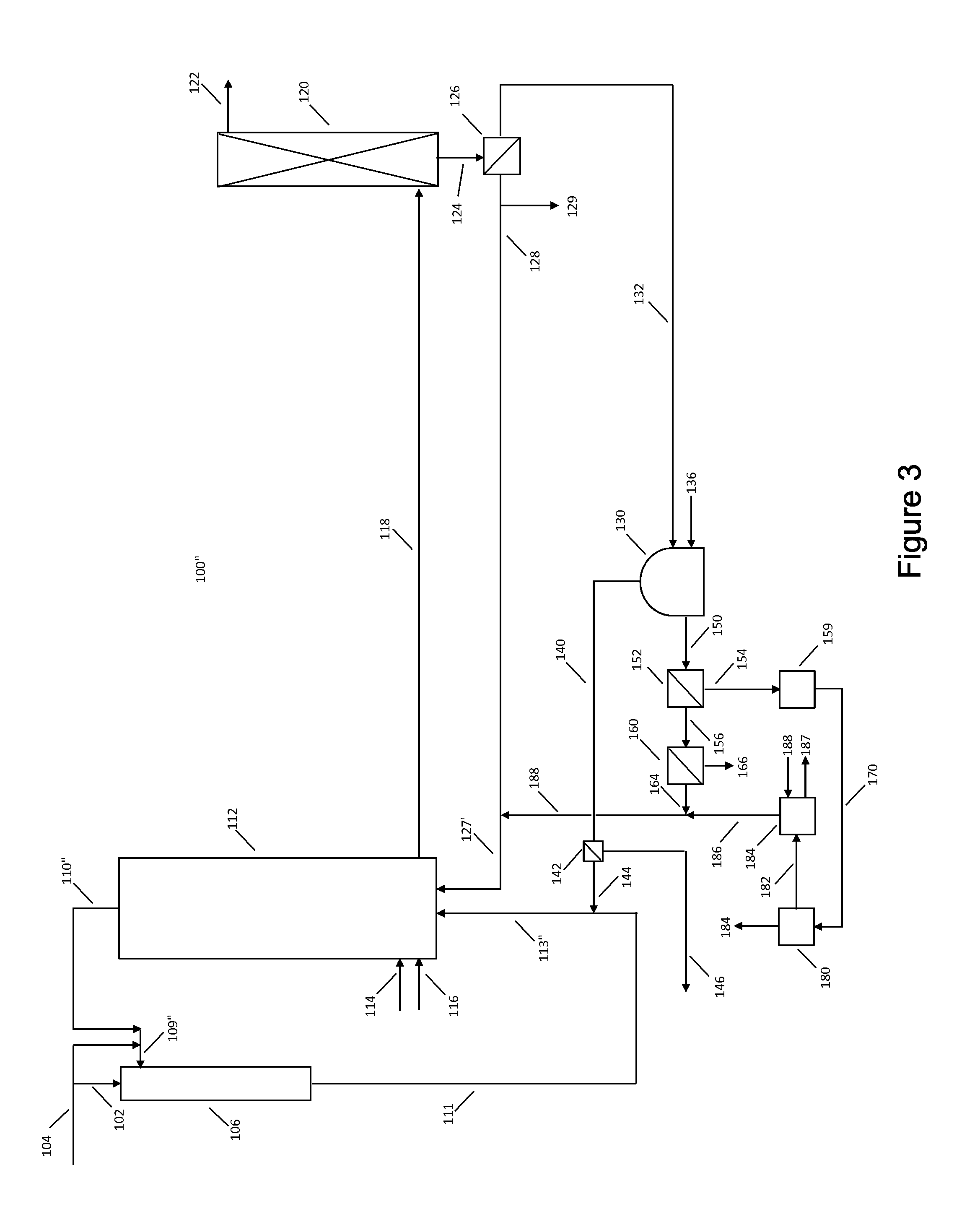Integrated processes for anaerobically bioconverting hydrogen and carbon oxides to oxygenated organic compounds
a technology of oxygenated organic compounds and bio-converting processes, which is applied in the direction of biofuels, enzymology, waste based fuels, etc., can solve the problems of difficult management or production of undesirable compounds, affecting the overall conversion efficiency of syngas to ethanol, stability of fermentation almost immediately. , to achieve the effect of increasing the overall conversion efficiency of syngas and reducing the rate of solid digestion
- Summary
- Abstract
- Description
- Claims
- Application Information
AI Technical Summary
Benefits of technology
Problems solved by technology
Method used
Image
Examples
example 1
[0256]This calculated example relates to the aspect of the invention that involves the addition of source separated organics (SSO), particularly food wastes that have been treated to remove contaminants and macerated or pulped to generate a slurry suitable for co-digesting in an AD along with excess biosolids produced during the syngas fermentation. The resulting biogas stream is reformed using a non-catalytic partial oxidation reformer. This is in turn then blended with SMR reformed NG to produce a combined syngas with the preferred e− / C ratio to achieve a high conversion efficiency of both H2 / CO2 and CO to soluble oxygenated products.
[0257]The SSO slurry is assumed to have a composition similar to that presented in Table 1, which is based on the characterization of a combined FW mixture from cafeterias, grocery markets and hotels (Zhang et al., 2007).
TABLE 1Characterization of Food WastesParameterUnitsConcentrationTS%30.9VS (volatile solids)%26.3N% dw3.16P% dw0.52COD / VSg / g1.55
[025...
PUM
 Login to View More
Login to View More Abstract
Description
Claims
Application Information
 Login to View More
Login to View More - R&D
- Intellectual Property
- Life Sciences
- Materials
- Tech Scout
- Unparalleled Data Quality
- Higher Quality Content
- 60% Fewer Hallucinations
Browse by: Latest US Patents, China's latest patents, Technical Efficacy Thesaurus, Application Domain, Technology Topic, Popular Technical Reports.
© 2025 PatSnap. All rights reserved.Legal|Privacy policy|Modern Slavery Act Transparency Statement|Sitemap|About US| Contact US: help@patsnap.com



